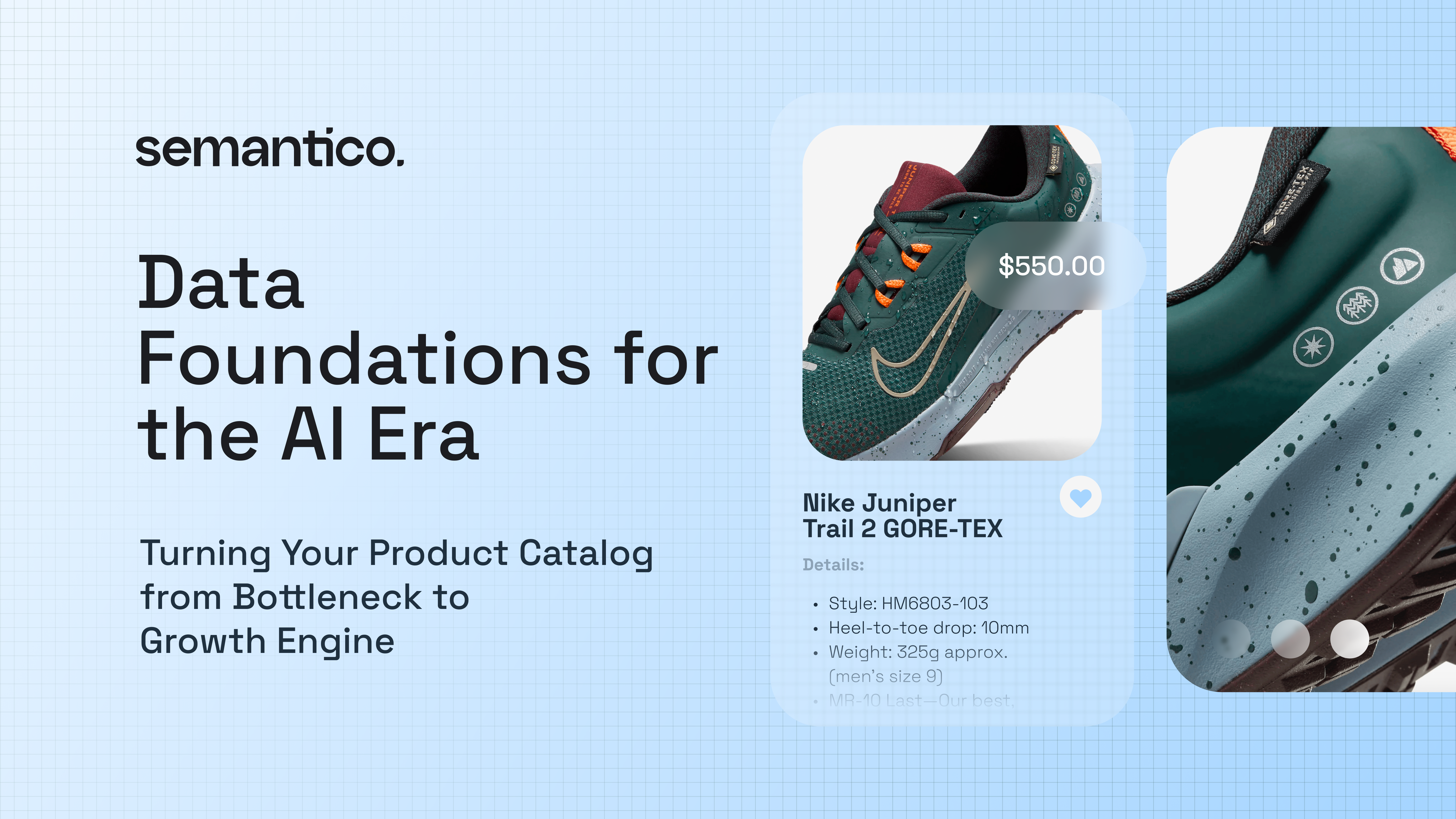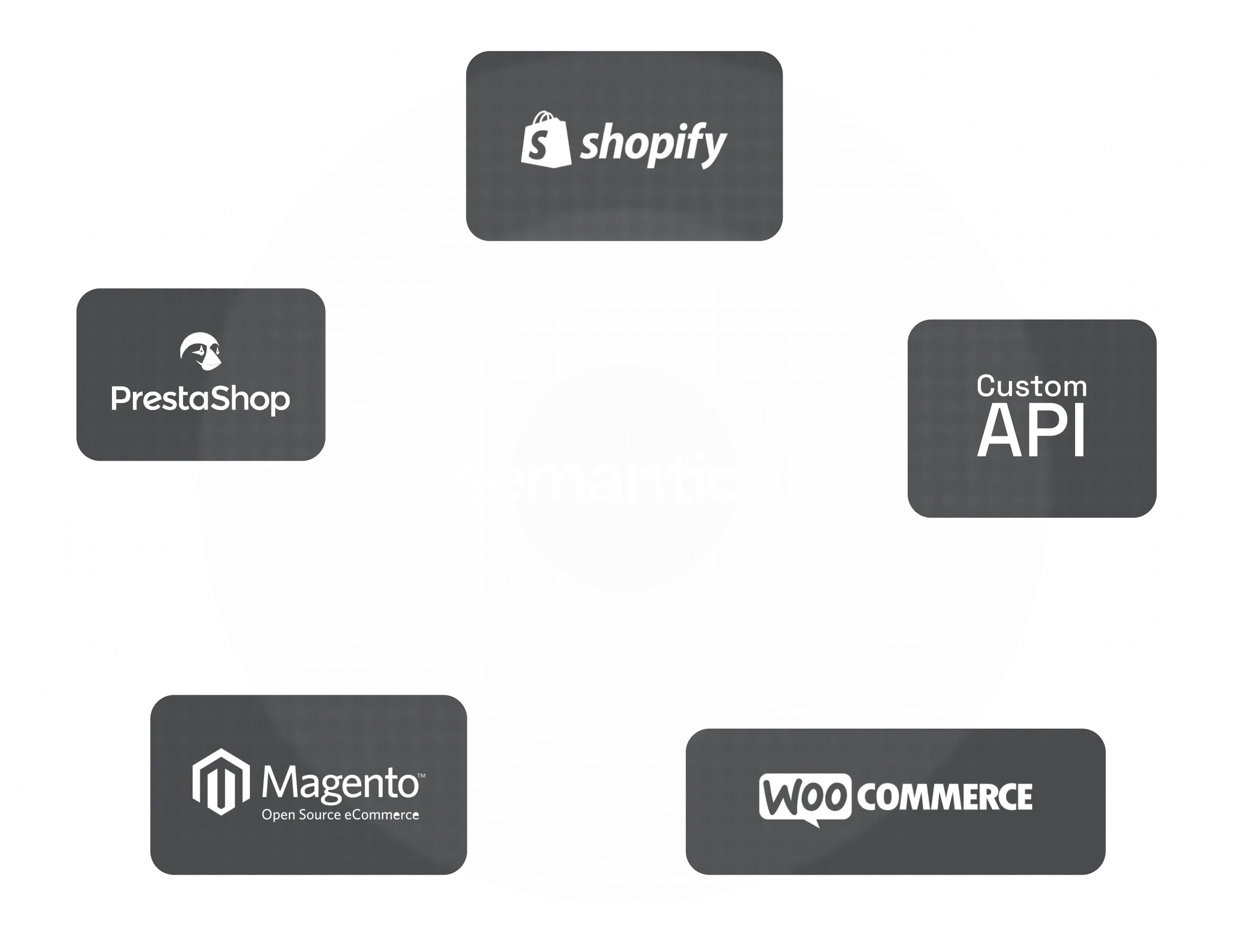Data Foundations for the AI Era: Turning Your Product Catalog from Bottleneck to Growth Engine
Shoppers move fast. Your catalog doesn’t. If you’ve ever rushed to add a new product to your online store, you know the feeling. The distance between “We have this SKU in stock” and “It’s live on the website, complete and SEO-friendly” can feel like wading through a swamp of spreadsheets and copy-pasted content. Every new product, variant, or market expansion multiplies the chaos. Listings go up late (or not at all), product attributes don’t match across channels, translations drift off-brand, and images or metadata get overlooked. All that adds up to lost traffic and missed sales opportunities – a hidden drag on your business that you might not even realize is happening.
The “Catalog Chaos” Tax: Hidden Costs of Bad Product Data
There’s a name for this constant friction and inefficiency: the Catalog Chaos Tax. It’s the price you pay (often invisibly) for managing product data in a fragmented, manual way. And it’s more expensive than you think. Consider some of the costs your team may be paying daily:
- Launch delays: Products sit in “almost ready” limbo while everyone chases down specs, edits copy, or hunts for the right images. Every week a product launch is delayed is a week of lost revenue and relevance.
- Inconsistent information: One spreadsheet says one thing, another says something else. Misaligned attributes lead to miscategorized items, confusing search engines and customers alike. The result? Poor search placement, avoidable returns from wrong product info, and customer support headaches.
- SEO shortfalls: When pages finally go live, they might be thin on content or missing the keywords and metadata that drive organic traffic. You never recapture the long-tail search hits you could have owned if the product content was optimized from day one.
- Growth bottlenecks: Expanding to a new channel or country is slow because your content doesn’t easily adapt. Localization, formatting for each marketplace, ensuring compliance – without structured data, these tasks don’t scale, and expansion stalls out.
These are all forms of the Catalog Chaos Tax, and they compound over time. A lost week here or a missed opportunity there might not seem like much, but for a growing e-commerce catalog, the annual impact can easily reach seven figures in lost sales. It’s not just the immediate sales you lose – falling behind on content and data quality also hurts your search rankings and marketplace reputation, which decide your future reach. In short, bad product data isn’t just an annoyance; it’s a margin-killer and a growth killer.
Better Data, Not More Data: Why AI Needs Structure to Deliver Results
So how do we fix it? In the era of AI, many teams think the answer is simply more data – more content, more product specs, more of everything to feed the machine. But the truth is, you don’t need more data — you need better-structured data. AI can be a game-changer for e-commerce, but only if your product information has a solid foundation.
Think about it: modern AI models are now surprisingly good at understanding products (finally!). With just a single reference point – say a product ID or a basic description – an AI can infer a lot about that item. It can suggest the right category, fill in missing attributes, generate descriptive copy, and even recommend SEO keywords. But it can only do this reliably when your data is organized and consistent. Garbage in, garbage out, as the old saying goes.
Structured product data is the bedrock for any AI-driven solution. It means having a clean, consistent catalog where each product’s category, attributes, and content follow a clear format and logic. When your data is structured, a machine doesn’t have to guess what “Color” or “Size” means across different listings – it knows. Your AI tools can then publish smarter, not just faster: launching products same-day with complete, enriched content that’s consistent in every language and channel. On the flip side, if your data is a mess of spreadsheets and inconsistent fields, even the best AI will struggle to make sense of it. In the AI era, the winners won’t be those who simply have more data, but those who manage and structure their data better.
Goodbye Spreadsheets. Hello Sales. Embracing an AI-Powered Workflow
For years, the go-to method for managing catalogs was a patchwork of PIM systems, Excel sheets, and manual copy-paste. It worked when you had a small catalog or lots of time, but it doesn’t scale for modern e-commerce. Today, there’s a better way. Goodbye spreadsheets. Hello sales. This isn’t just a cheeky slogan – it’s what happens when you replace the old tedious process with a streamlined, AI-driven catalog workflow.
Imagine feeding a minimal input about a product into a system – maybe just a SKU, a title, and a few key details – and getting back a full, ready-to-publish product listing. That’s the power of combining structured data with AI. The heavy lifting that used to eat up your team’s days can now happen in seconds, automatically. At Semantico, we call this new approach a AI-Powered Product Catalog Management Platform. It’s a single, smart flow that handles everything from creating content to enriching it, localizing it for each market, and publishing it to every channel – with your team providing guidance and final tweaks, not doing all the grunt work.
Here’s how an AI-powered catalog workflow changes the game:
- One-and-Done Content Creation: Drop in what you have (even if it’s just a rough product description or a supplier sheet). The system generates a first draft of everything – product titles, descriptions, bullet points – tailored to your brand voice. No blank pages, no starting from scratch.
- Automatic Enrichment: The moment you input a product, it’s instantly classified into the right category, and key attributes are filled in. The AI ensures naming is consistent (is it “Chestnut Brown” or just “Brown”? Pick one!) and even suggests additional attributes you might have missed.
- Built-in SEO and Translation: Every listing comes with SEO best practices baked in – keyword-rich titles, meta descriptions, structured markup – so your page is search-ready from the get-go. If you operate in multiple languages, the system can translate the content while keeping the tone and brand messaging consistent. No more copy-paste into Google Translate or maintaining separate translation spreadsheets.
- Image and Price Optimization: Did your supplier image come in a weird size or low resolution? An AI-driven platform can auto-enhance images or flag those that don’t meet your site standards. It can even suggest pricing (based on market data and your guidelines), giving your team a starting point that makes sense.
- Seamless Publishing Everywhere: Once the listing looks good, publish it out with one click. Your e-commerce platform or marketplace gets the data in the format it expects – no tedious CSV uploads or reformatting. Whether it’s Shopify, Magento, Amazon, or your custom site, you have clean, structured product data flowing into the storefront without extra busywork.
In this new workflow, your team isn’t bogged down by endless manual edits or data entry. Instead, they’re free to focus on strategic tweaks and quality checks – things that truly add value – while the system takes care of the rote tasks. The result? Same-day product launches become feasible. Content remains consistent and high-quality across all channels. Your team gets hours back in their week, your pages launch strong with full SEO juice, and your brand can scale to new markets without losing consistency. In short, you stop treating the product catalog as a tedious checklist and start running it like a growth engine for your business.
Ready to Turn Catalog Chaos into Growth?
It’s time to stop paying the Catalog Chaos Tax and start investing in a smarter approach. Your product catalog can be so much more than a bottleneck – it can be a driver of revenue and innovation. The technology and tools to make this leap are here right now. Semantico’s vision is simple: turn catalog management from a headache into a competitive advantage. We’ve helped multi-brand e-commerce teams automate their slowest catalog tasks and watched them reclaim their time and market momentum.
If you’re ready to say goodbye to spreadsheets and hello to more sales, let’s talk. Try Semantico for yourself and see how better-structured data can transform your business. Share a few of your product SKUs with us, and we’ll show you a preview of what an AI-powered, perfectly structured listing looks like on your site – in a matter of minutes. It’s time to let your catalog fuel growth, not hold it back. Get in touch with Semantico today, and never look back at that swamp of spreadsheets again.





